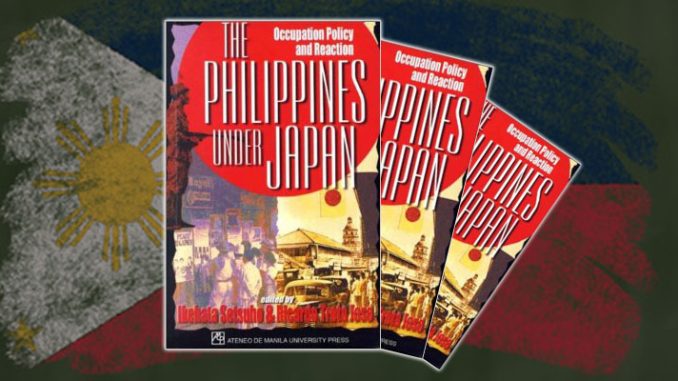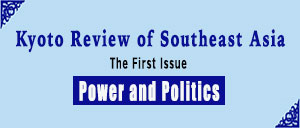
The Philippines Under Japan: Occupation Policy and Reaction
Ikehata Setsuho and Ricardo Trota Jose, editors
Quezon City / Ateneo de Manila University Press / 1999
If understanding the past is a key to making sense of the present and the future, this collection of eight meticulously researched and clearly written articles on the Japanese occupation of the Philippines is a must read.
The book stands out for its extensive use of hitherto inaccessible primary Japanese documents and selected interviews with Japanese personnel directly involved in the Occupation. With these invaluable resources, the scholars writing here have provided new perspectives essential to our understanding of the political, social, and economic aspects of the Japanese occupation which have been unstudied or glossed over in the past.
A careful examination of Japan’s official occupation strategy towards the Philippines, which was originally rooted in a surprising policy of appeasement and conciliation, serves as the book’s unifying theme. The book’s eight contributors (seven Japanese and one Filipino) examine the unravelling of this policy in various areas of the Occupation experience, stressing the policy’s contradictory and devastating consequences given the exigencies of war and popular resistance to military occupation.
In the book’s opening chapter, Nakano Satoshi identifies the guiding documents, policies, and reasons adopted by the Japanese military administration for its official strategy of appeasement in its occupation of the Philippines. This strategy was implemented in two major ways. First, the Japanese authorities sought to win over the Quezon-led Commonwealth government with the promise of respecting existing governance structures and practices and granting independence. Second, the authorities sought to develop a “wait and see attitude” among the people by trying to depict the war as essentially between the United States and Japan, with no meaningful stakes for Filipinos. While the appeasement policy facilitated the active or passive collaboration of a substantial portion of the national political elites, this strategy met a dead end with the challenge of widespread guerrilla resistance, the failure to provide economic security for the people, and the abuses committed by the occupation army.
Terami-Wada Motoe analyzes an internal challenge to the official appeasement policy represented by some Japanese military and civilian officials who favored supporting and working with anti-American and pro-Japanese independence leaders such as the exiled General Ricarte, who was brought back during the war, and Benigno Ramos of Sakdal fame. This opposition culminated in the creation of Filipino volunteer armies such as the Makapili, the “Peace Army” organized by Ricarte himself, and the Bisig-Bakal ng Tagala of Aurelio Alvero. In contrast to the collaborating national elites who were given amnesty after the war, surviving Filipinos who had joined the volunteer armies on the Japanese side typically served prison terms and were treated as social outcasts in their local communities.
Kawashima Midori explores the impact of the appeasement policy in Muslim Mindanao with Lanao as a case study. She discovers that an early attempt by some military officials and civilian advisers to partition Mindanao and put it under the special and economic control of Japan was voted down by the top authorities because it proved inconsistent with the official appeasement policy. Moreover, Kawashima’s research on Lanao belies the widely accepted idea that Muslims and Christians put aside their differences to fight the Japanese military. Collaboration with Japanese authorities in the area cut across religious affiliations, and there were Muslim and Christian leaders on both the guerrilla and Japanese sides.
The religious face of appeasement policy toward the Christian churches in the Philippines is examined by Terada Takefumi. To help win the support of the majority Christian population and elite officials, the Japanese Army General Staff created a special Religious Section made up of Christian clergy and laity from Japan. The members of this section visited various parts of the country to say mass and hold services in local churches and facilitated the release of detained religious personnel. Bishop Taguchi of Osaka later joined the section staff and actively led the appeasement campaign directed at the Philippine Catholic Church. Through the policy recommendations of Bishop Taguchi, the Japanese military administration sought a comprehensive agreement (concordat) with the Vatican that would have addressed contentious demands such as the Filipinization of the ruling hierarchy of the Catholic Church, the regulation of church property, and the regulation of educational curricula.
The book has three important chapters on the impact of the Japanese occupation on the economy: Ikehata Setsuho on the mining industry; Nagano Yoshiko on cotton production; and Ricardo T. Jose on the rice crisis. All authors agree that the failed policies pursued during the occupation period, which were meant primarily to serve the needs of the war effort, set back Philippine economic development. The three authors also concur that guerrilla resistance to Japanese attempts to operate these industries was a major reason for their failure.
Ikehata documents how the Japanese military sought to exploit the rich mineral resources of the country (copper, iron, chrome, manganese) through the system of military-controlled or -commissioned management enterprises. She further points out that aside from guerrilla resistance, the following factors explain the failure of Japanese attempts to operate and exploit the mines: difficulties in hiring local labor and securing safe transport of mined ore, lack of investment funds, insufficiency of transportation, and lack of fuel.
In the case of the cotton industry, Nagano stresses that Japan’s grandiose cotton production plan in the Philippines and elsewhere in Southeast Asia was an attempt to compensate for its cutting off of raw cotton imports from the U.S. and India. This failed because of the antagonistic attitude of landlords and peasants and the unsuitability of new seed varieties, in addition to guerrilla resistance.
Ricardo Jose discusses the intractability of the rice crisis in his chapter on the rice shortage and countermeasures adopted during the Japanese occupation. The Laurel government’s efforts to increase food production and control prices and food distribution proved futile because of its meager resources and the low level of public support. As the war progressed, most of the rice procured by government agencies went to the Japanese army or fell into the hands of black marketeers. Reflecting its devastation, the postwar rice industry would take more than five years to reach its prewar production levels.
The book’s final chapter by Hayase Shinzo chronicles the tragic disintegration of the Japanese immigrant community in Davao as it was mobilized for the war effort by the Japanese administration. The Japanese residents of Davao, who were running a thriving abaca industry by the time of the war, were mostly migrant laborers of Okinawan ancestry, lacking education, and intermarried with the local population. Considered as “inferiors” by Japanese military and civilian officials, the Japanese residents of Davao, particularly the spouses of Filipinos, actively supported the Japanese military to prove their Japanese ancestry and loyalty.
An added bonus for researchers is an extremely useful appendix identifying and listing the location of source materials related to the Japanese occupation of the Philippines.
The editors of the book are established scholars in their field. Ikehata is professor of Southeast Asian History and president of Tokyo University of Foreign Studies and the acknowledged dean of Japanese Philippine specialists. Jose is professor of history at the University of the Philippines and an authority on the Japanese occupation of the Philippines.
Temario C. Rivera
The author is a professor in the Division of International Studies, International Christian University, Tokyo.

